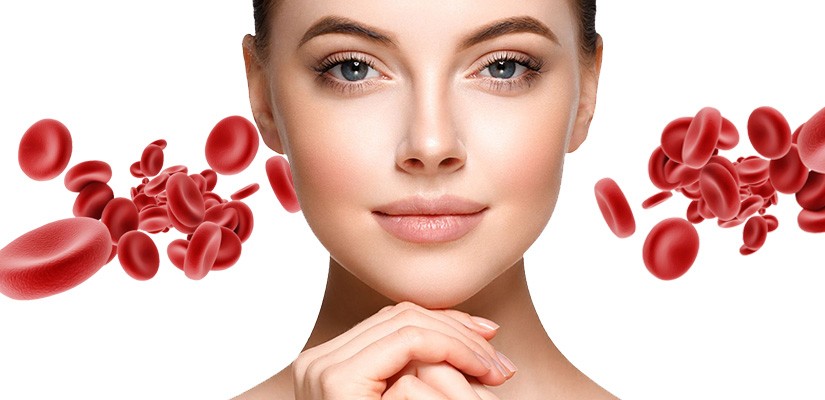
PRP, written in English, means Platelet Rich Plasma, which means serum in which Platelets, which have an important role in clotting in our blood, are concentrated. Platelets, which are found in normal frequency in the blood (an average of 200 000 in 1 ml), not only take part in blood clotting, but also accumulate in areas of injury and secrete a substance called mediator, calling the cells we call 'Stem Cells', which can differentiate and multiply according to the needs of different environments, to the area of injury. The purpose of this is for stem cells to produce the cells necessary to repair the damage that has occurred here. This most commonly occurs as an increase in the production of collagen fibers, which turn into fibrocytes, and elastin, which turns into elastocytes.
How to Obtain PRP?
PRP is simply obtained from the person's own blood. At the beginning of the application, the blood taken from the vein is centrifuged in a sterile environment to ensure that the platelets are collected in one place. With the help of a syringe, serum rich in platelets is aspirated and made ready for application.
How Does PRP Work in Skin Rejuvenation?
Let's assume that the liquid (PRP) obtained from concentrated blood is injected into the skin in any region. The injection process creates an injury and since there are many platelets here, there are more than a normal injury.
By calling the Stem Cell, an increased activation, cell production, new collagen and elastin synthesis and increased blood flow to the area where these occur, angiogenesis (development of new vessels) occur. As a result of these events, skin thickening, increased elasticity, tightening and increased blood flow in the treated area. It causes better nutrition, which results in a decrease in wrinkles and looseness, a more vibrant appearance, increased cell repair and development, and a decrease in color changes as a result of the repair of the damaged epidermis. This means a tighter, more vibrant and younger skin appearance.
In what situations and where is PRP useful?
PRP can be used alone or with other methods, especially when there is damage, wear and tear on the skin (such as skin thinning, wrinkling, loosening, staining). The aim here is to reduce thinness, wrinkles and looseness by increasing the number of cells and fibers in the skin. This occurs mostly in middle-aged and older people, and factors such as prolonged exposure to the sun, smoking, and poor nutrition increase this damage. In addition, genetic factors are of great importance in the formation of these changes. It should be known that it will be less effective in treating lesions on the skin of young people.
Using PRP Application with Other Skin Rejuvenation Methods
PRP can be used with various laser applications, filling procedures, skin abrasions and even as a supporter after some surgeries. It is recommended to be used as a complement and supporter to Fractional Laser applications, which are used to reduce wrinkles and blemishes on the face and are considered the 'Gold Standard'.
Does PRP Replace Other Applications?
PRP has a place in skin rejuvenation. However, each application has different advantages. The areas where filler is effective and the situations where Botox is useful are different, while the expectations of laser applications are different. These cannot be used effectively instead of each other, that is, using PRP as a filler and comparing it is meaningless. Similarly, using fillers or Botox applications instead of PRP treatment will not yield the desired results. Of course, the physician performing the application must decide on the selection of the application method, its combination and frequency of application.






